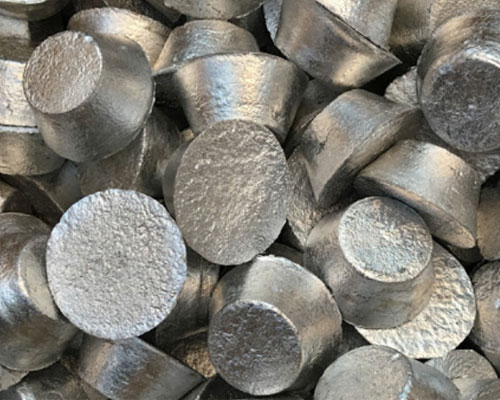The aluminum strontium master alloy is suitable for use as a structure refiner during the solidification of molten aluminum-silicon alloys, and is a molten alloy containing aluminum and 5 to 35% by weight of strontium. The aluminum-strontium alloy achieves the purpose of structural refinement, and can be processed into a more suitable form, such as extruding into wire or bar, or rolling into a plate.
Aluminum strontium master alloy is a very effective structure refiner for aluminum-silicon alloys, especially eutectic and sub-eutectic alloys. The absorption of strontium in cast alloys is very high, usually between 95% and 100%. Under normal circumstances, no gas will be absorbed during the addition, and the slag produced is small or even non-existent.
The master alloy is effective for both low and high cooling rates for the aluminum-silicon alloy that should function in it. The dissolution rate is very high (usually less than one minute). Compared with the traditional cast aluminum strontium master alloy, its temperature loss is relatively low, and the latter has a lower strontium content. Since the obtained alloy is very ductile, the alloy can be produced in the form of a wire or coil, so the alloy can be fed with a conventional coil feeder.
The amount of strontium is preferably between 7.5 and 25%. The amount of aluminum in the master alloy is usually 65-95%. There may be a small amount of one or more other elements in the master alloy, such as iron and silicon. There may also be traces of usual impurities.
In a preferred embodiment, the master alloy also contains titanium and/or boron, because these elements show a very good structure refining effect on aluminum crystals, thus resulting in aluminum-silicon casting alloys with further improved properties. The amount of titanium is suitably between 0.5 and 5%, and the amount of boron is suitably between 0.02 and 2%. Preferably, the amount of titanium is 1 to 3% and the amount of boron is 0.05 to 1%.

